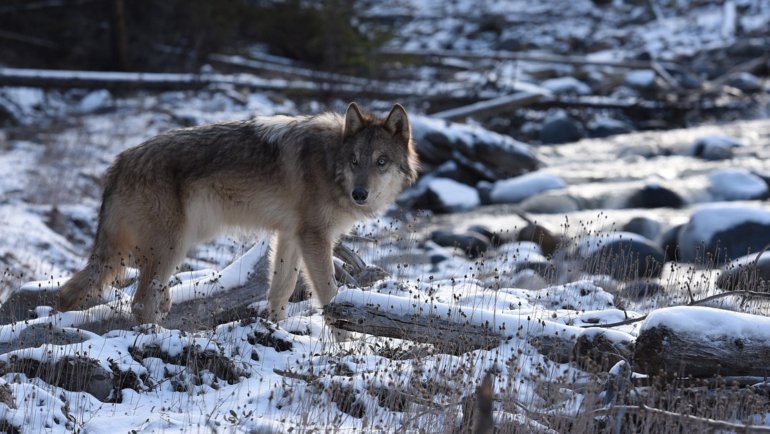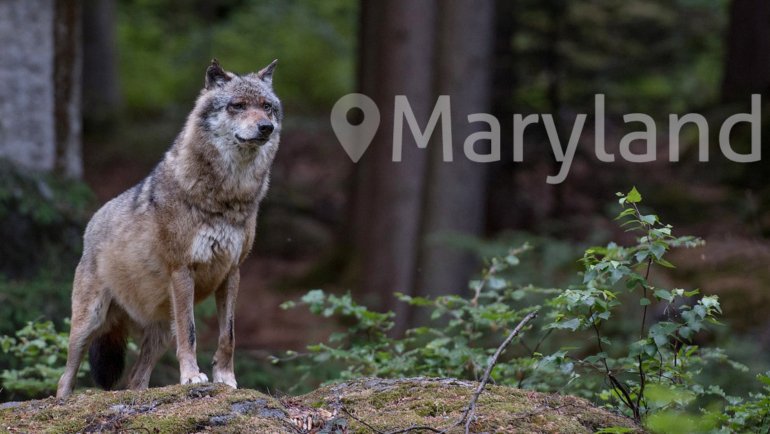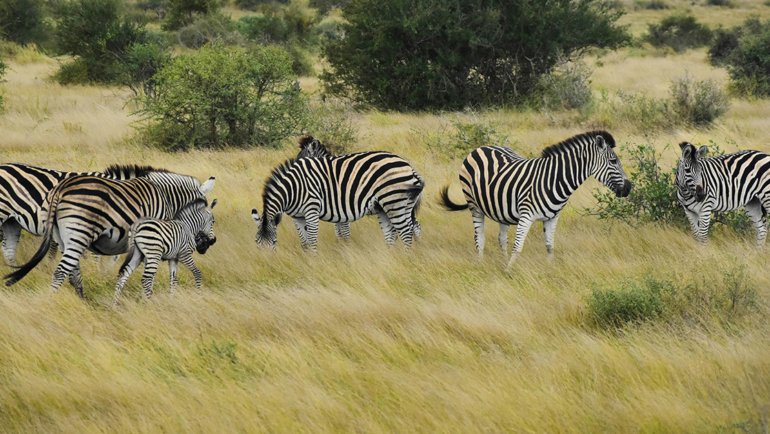Welcome, wildlife enthusiasts! In this article, we delve into the snowy world of the Arctic Fox (Vulpes lagopus).
Known for their snow-white fur and remarkable adaptability, these little canids are the embodiment of resilience and survival. From changing fur color with the season to surviving the chilliest climates, the Arctic fox is truly an animal of wonder.
Read on to discover more about this amazing creature’s biology, behavior, and its adaptations to the harsh Arctic conditions.
The Arctic Fox at a Glance
Classification
| Kingdom: | Animalia |
| Phylum: | Chordata |
| Class: | Mammalia (Mammals) |
| Order: | Carnivora |
| Family: | Canidae |
| Genera: | Vulpes |
| Species: | V. lagopus |
Essential Information
| Average Size: | 18 to 27 inches (46 to 68 cm), with a 12 inch (30 cm) tail |
| Average Weight: | 6.5 to 17 pounds (3 to 8 kg) |
| Average Lifespan: | 3 to 6 years in the wild, up to 14 years in captivity |
| Geographical Range: | Arctic regions of the Northern Hemisphere |
| Conservation Status: | Least Concern (IUCN Red List) |
Species and Subspecies
The Arctic fox (Vulpes lagopus) is considered a monotypic species, meaning there are no recognized subspecies.
However, two distinct ecotypes or “forms” of the species exist based on their foraging habits and habitats: the coastal form, which is dependent on marine resources, particularly seals, and the inland or tundra form, which relies on terrestrial prey, particularly lemmings.
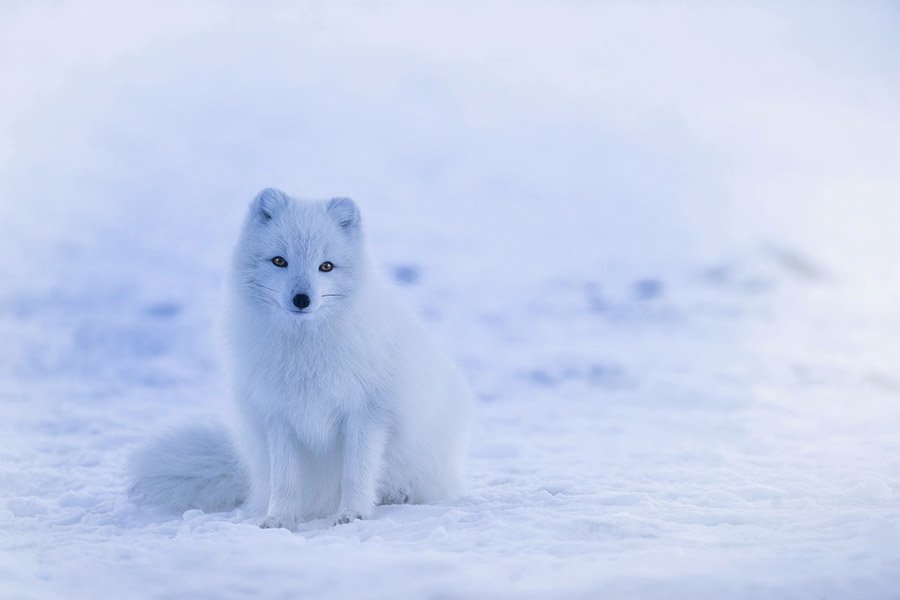
Description
The Arctic fox is well-adapted to thrive in the harsh, frigid environment of the Arctic. Their body size ranges from 18 to 27 inches (46 to 68 cm) in length, excluding their bushy tail, which can add an additional 12 inches (30 cm). Their weight fluctuates between 6.5 to 17 pounds (3 to 8 kg), depending on the season.
A most distinctive feature of the Arctic fox is its dense, warm fur, which changes color with the season, providing excellent camouflage. In the winter, their coat is thick and white, blending in with the snow, while in the summer, it thins out and turns brown or gray to match the surrounding rocks and vegetation.
Sexual dimorphism in Arctic foxes is minimal but males are generally slightly larger than females.
Habitat and Distribution
As their name suggests, Arctic foxes are found throughout the Arctic regions, in the Northern Hemisphere. They inhabit the tundra biome, stretching through the Arctic Circle, including places like Alaska, Canada, Greenland, Russia, Norway, Scandinavia, and Iceland.
Arctic foxes are incredibly well-adapted to their environment, capable of withstanding extreme cold temperatures as low as -58 degrees Fahrenheit (-50 degrees Celsius).
They primarily make their dens in rocky hillside outcrops, cliffs, and banks, which provide some protection from the cold wind. The den is a critical part of their lives, used for raising their young and sometimes for hunting, as they are known to stalk lemmings right into their burrows.
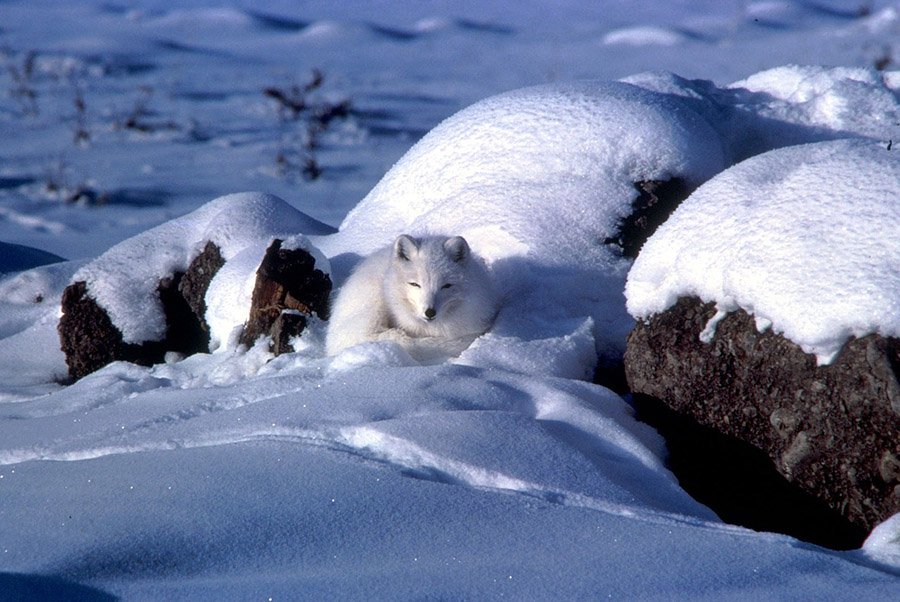
Behavior
Arctic foxes are primarily nocturnal but can be active at any time of the day. They tend to be more active during the twilight hours of dawn and dusk. Their behavior varies depending on the season and availability of food.
Arctic foxes typically live in monogamous pairs during the breeding season and raise their pups together. Outside of the breeding season, they tend to be more solitary but may form small groups in areas with abundant food resources.
Communication among Arctic foxes involves a combination of vocalizations, body postures, and scents. They use a high-pitched alarm call to warn others of danger, and other vocalizations for communication between mates and their young.
Diet and Feeding Behavior
Arctic foxes are omnivores and have a varied diet depending on their location and the season. During summer, they primarily feed on small mammals such as lemmings and voles.
They will also eat birds, eggs, insects, and plant material, including berries. In winter, when food is scarcer, they become more dependent on scavenged leftovers from larger predators like polar bears, or even eat their own feces when necessary.
Their hunting technique is a sight to behold. They can hear their prey even when it’s underground. Once located, they jump high and pounce, breaking through the snow to reach their unsuspecting meal.
Predators
Arctic foxes have few natural predators due to their remote habitat. Polar bears and wolves are potential threats, especially to pups.
Red foxes, which are larger and more aggressive, have been known to kill Arctic foxes and take over their dens, particularly as the climate warms and red foxes move further into Arctic fox territory. Eagles are also a threat, especially for young pups who have strayed from their dens.
In some regions, the greatest danger to Arctic foxes comes from human activities, such as hunting for their beautiful fur and habitat disturbance.

Reproduction and Life Cycle
Arctic foxes are monogamous, with mating pairs forming in early spring. After a gestation period of approximately 52 days, the female, or vixen, gives birth to a litter of pups, usually between 5 to 10, although they can have up to 25 in a good year when food is abundant.
Both parents participate in the care of the young. The male brings food to the den and the female focuses on nursing and grooming the pups.
The young foxes, called kits, emerge from the den at about one month old, and by three to four months old, they are already proficient hunters. They usually leave their parents in the fall to establish their own territories.
Conservation and Threats
The Arctic fox is not currently classified as threatened or endangered. They are generally widespread across their range and fairly abundant. However, populations can fluctuate greatly depending on the availability of food, particularly lemmings.
Threats to the Arctic fox include climate change, which is reducing their sea ice habitat, and competition and predation from the red fox, which is moving into Arctic regions as temperatures rise. Hunting and trapping for their fur is also a concern in some areas, though not to the extent it was in the past.
Conservation efforts include legal protection from hunting and trapping in some countries and the monitoring of populations. In Sweden, a successful captive breeding and reintroduction program has helped to bolster the population. Also, as a key species of Arctic ecosystems, efforts to mitigate climate change will benefit Arctic foxes.
Fun Facts
- The Arctic fox has the warmest pelt of any animal found in the Arctic, enduring temperatures as low as -58°F (-50°C).
- Arctic foxes don’t start to shiver until temperatures drop to around -70°F (-56.7°C).
- Their small, rounded bodies also play a significant role in keeping them warm by reducing the amount of surface area exposed to the cold.
- The fur of the Arctic fox changes colors with the seasons. In the winter it’s white for camouflage against the snow, and in the summer it turns brown!
- Arctic foxes have incredible hearing, aided by their wide, front-facing ears, which allow them to locate the precise position of their prey beneath the snow.
Frequently Asked Questions
How do Arctic foxes stay warm?
Arctic foxes have a few adaptations to help them stay warm. They have deep, thick fur which is the warmest of any mammal. Their round, compact bodies minimize the surface area that is exposed to the cold air. They also have furry soles, short ears, and a short muzzle which are important adaptations to the cold environment.
Why does the Arctic fox have a white coat in the winter?
The Arctic fox has a white coat in the winter to help it blend in with the snow and ice. This camouflage helps it to hide from predators and sneak up on its prey.
What do Arctic foxes eat?
Arctic foxes are omnivores and will eat almost anything they can find. This includes small mammals like lemmings and hares, birds, bird eggs, berries, fish, and carrion. In times of scarcity, they are known to follow polar bears and eat their leftovers.
Are Arctic foxes endangered?
No, Arctic foxes are not endangered. However, they do face threats from climate change, which is reducing sea ice habitat, and encroachment by the larger red fox.
How long do Arctic foxes live?
In the wild, Arctic foxes typically live for 3 to 6 years. In captivity, they can live up to 14 years. Their lifespan can be influenced by factors such as food availability, predator presence, and harsh weather conditions.

